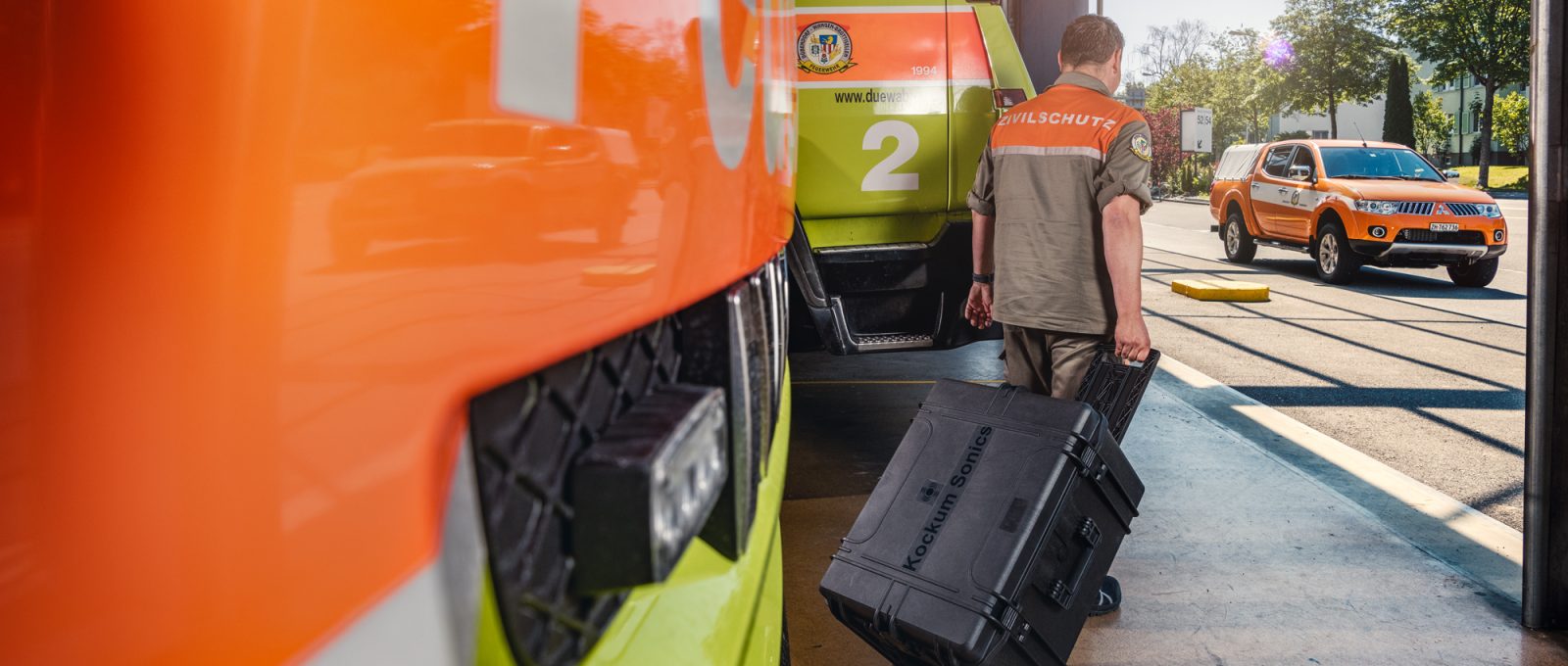An evacuation begins with an alarm or warning signal.
An efficient early warning system is part of a fast and effective evacuation in emergency situations.
Disaster evacuation: behaviour, warning systems and evacuation systems
In the event of a disaster – such as large-scale fires, explosions or floods – the rapid evacuation of people and animals is crucial. Modern evacuation systems play a central role in this. Sirens and other early warning systems are considered essential components of the alerting process, signalling the start of an orderly evacuation.
Stationary and mobile siren systems are essential components of effective evacuation systems. They can be used to alert and inform the affected population in a targeted manner. Mobile sirens also enable the transmission of instructions on how to behave, which can help to reduce panic and disorientation.
What to do when the sirens sound and during an evacuation?
- When the sirens sound: listen to the radio and read messages on apps (Alertswiss)
- When the water alarm signal sounds, leave the endangered area immediately and go to the nearest assembly point.
- Avoid calling the emergency numbers, as these are often overloaded.
- Follow the instructions of the authorities (announcements via mobile siren or megaphone, messages on the app or radio).
- Notify neighbours.
- Pack an emergency bag.
- Prepare your house/flat for a longer absence (turn off taps, switch off electrical appliances, close windows and doors)
- Take your pets with you if possible
- Leave the endangered area by public or private transport or go to the nearest emergency assembly point
What should you do during an evacuation?
During an evacuation, it is crucial to remain calm and follow the instructions of the evacuation personnel. Other rules of conduct
- Pass on your whereabouts and address to friends and emergency personnel
- Leave the endangered zone in a safe manner
- Avoid unsafe bridges and paths
- Stay on marked roads and footpaths
After returning home, make sure that the drinking water is not contaminated (e.g. after a flood or chemical spill nearby) and check your home for electrical short circuits.
